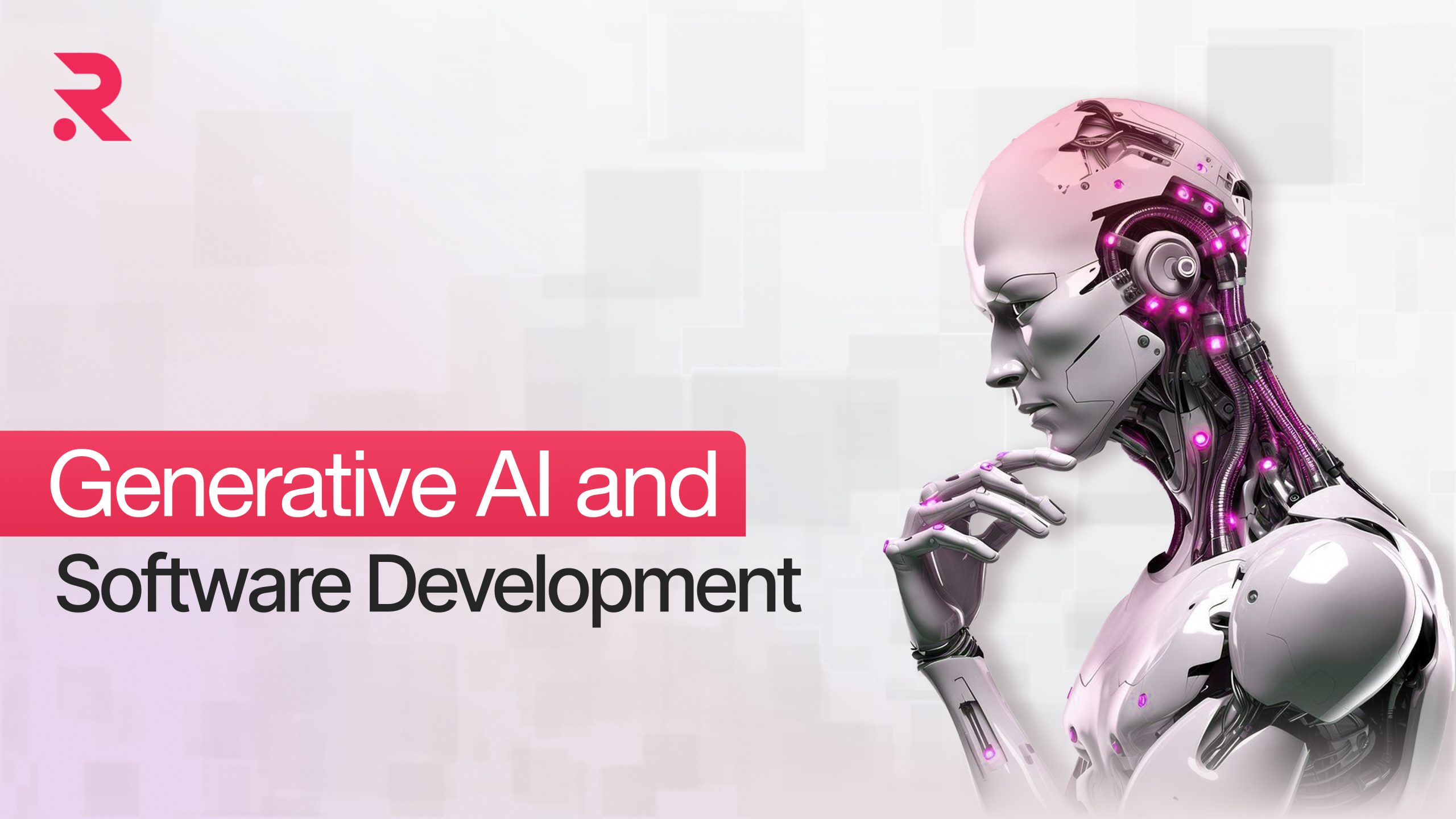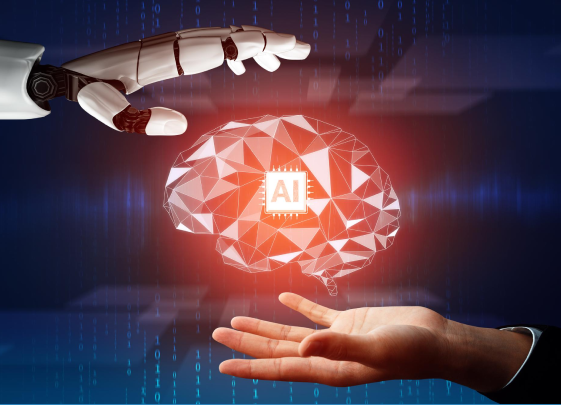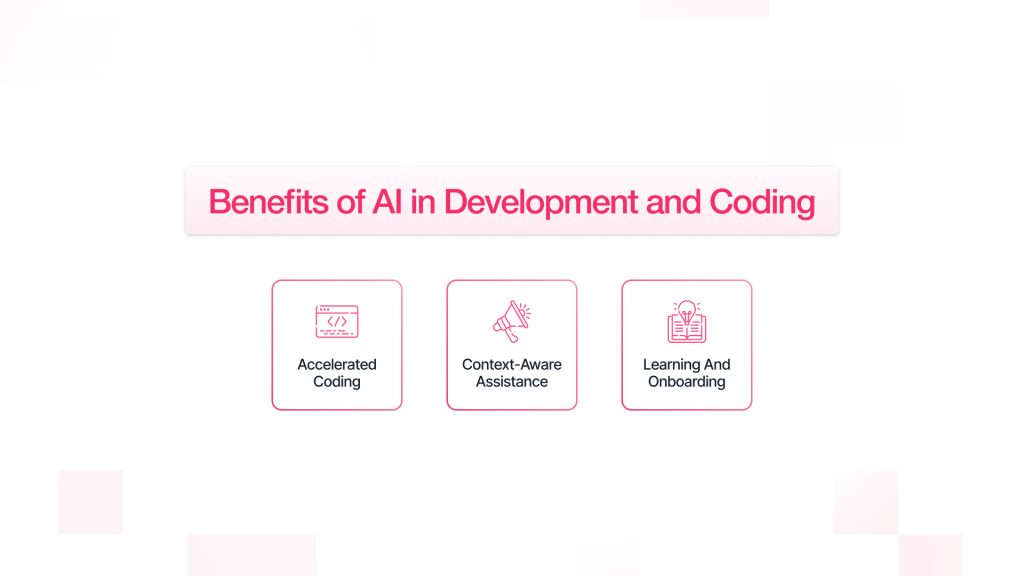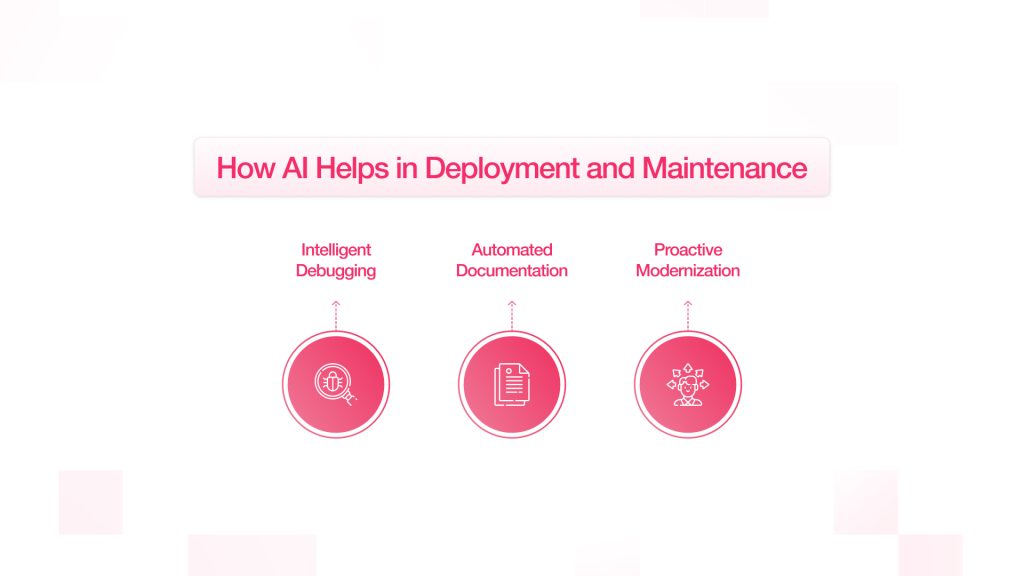Generative AI and Software Development: The Perfect Pair
Step into the future of coding. See how software development is being changed by generative AI. It enables people to complete more tasks. With the help of machine intelligence, people apply their own ideas. These have a strong connection. To find out more, go ahead and take a closer look.
- September 29, 2025
- by Tarun


Introduction: The Dawn of a New Development Paradigm
Software development is always changing. People wish to excel, move fast, and innovate more than before. There have been big changes in the past. There has been happening a very marked evolution in the software industry: the creation of compilers. Then came along many more new castes of working life, such as DevOps. Every modification made it possible to create software more quickly and with greater strength. Now, we are about to see the biggest change of all. The aim is to use Generative Artificial Intelligence like a helpful assistant. This is not for making new things.
Generative AI and software development now work together in a strong way. This new mix is changing how people think about, build, and look after software. It is not only about making tasks automatic. You also can use your mind in a better way. It even helps you find new ways to be creative. With this, people can handle hard problems much better now. This article looks at how Generative AI is becoming a part of every part of the Software Development Life Cycle (SDLC). You will read about what it gives you, how you can see real good results from it, and the right way to use all the power it has, but in a safe and smart way.
Demystifying Generative AI: The Engine of Creation
We must begin with a few basic facts in order to comprehend what generative AI is. One type of tool that creates new content is generative AI. It differs from the earlier AI that examines data or makes predictions about what might happen next. While some older AI can detect cheating or sort images, generative AI is capable of much more. A lot of data is used in the process by Large Language Models (LLMs). They examine words and concepts to determine how they relate to one another. These systems examine writing, code, and content posted online. They create new things that didn’t exist before by applying what they know.
Large collections of publicly available code are used to train models in software development. They get better at spotting trends, getting what code comments mean, and seeing how code works. With this training, they can do things like:
- Code Completion: Giving you the next line or group of code while you work, as you type.
- Code Generation: Turns plain English into functions or scripts.
- Translation: Changing code between different computer languages.
- Explanation: Explains tricky old code in plain English.
This thing makes work simpler and boosts what people can do. It assists coders by taking care of the dull stuff, so they can use their brains on bigger ideas or challenges. It gives them extra time to think up fresh, cool stuff.
The Symbiotic Dance: Generative AI Across the Software Development Life Cycle (SDLC)
Generative AI helps every step from coming up with ideas to using those ideas and keeping things running well.
Requirements Gathering and Design (The Start Phase)
- The first step is to turn rough ideas into clear plans that use technology. Generative AI is a strong partner that can help you think of new ideas.
- Generating User Stories & Specifications: If you enter a main idea, AI can help make an early list of user stories, what needs to happen for the story to be accepted, and possible problems that might come up. This gives you a strong place to start.
- Architectural Planning: Advanced tools can show you starting diagrams for building plans and help pick the best technology stacks. These tools look at the project’s needs and use what people have learned works well before.
Development and Coding (The Construction Phase)
This is the place where you see the most clear and big changes. AI-powered coding helpers are now a key part of the work.

- Accelerated Coding: These tools can cut down on a lot of simple code work. Making normal code for API calls or usual tasks lets people work on the parts of the app that have more business ideas and do things different from the rest. So, you get to spend more time on what makes your app special.
- Context-Aware Assistance: Modern tools work right inside the IDE. They look at the code you have now, so the suggestions fit well with your work. These tools help you change code to make it better and faster. They can also help make unit tests for your code.
- Learning and Onboarding: For new developers or people who are working with a codebase they do not know well, Generative AI acts as a great guide. It can explain hard parts of the code. This helps new team members get up to speed faster and start doing their work more quickly.
Need Reliable Software Development partner to help grow your Business?
Our Experts Can Help!
Testing and Quality Assurance (The Validation Phase)
Although it can take a long time, software testing is crucial. People can complete the process more quickly and easily thanks to generative AI. It provides more assistance in identifying errors and better methods for checking the work.
- Automated Test Case Generation: AI is able to generate a variety of unit and integration tests straight from the code. This expedites the process and enables you to examine additional system components. Bugs that people might not always notice can be detected by it.
- Smarter Test Data Creation: It can be hard to make good test data that looks real. Generative models help to create strong and safe test data. This fake data seems like real data, but it does not put anyone’s privacy at risk. Top providers show that this way works well.
- Predictive Analysis: AI checks at code changes to see which parts of the app might not work. When QA teams use this, they get information about where to put their focus. This lets them know what parts need their time and work first.
Deployment and Maintenance (The Evolution Phase)
Post-deployment, maintenance, updates, and debugging are ongoing tasks where Generative AI proves its worth.

- Intelligent Debugging: Developers can paste an error message into an AI chatbot, which can then not only explain the error but also suggest precise fixes and best practices to resolve it.
- Automated Documentation: Keeping documentation in sync with code is a common pain point. AI can automatically generate and update technical documentation and API references, ensuring knowledge is preserved.
- Proactive Modernization: Generative AI can analyse legacy codebases, suggest modernizations, and even assist in refactoring or translating old languages into newer, more sustainable ones.
The Low-Code/No-Code Revolution: Democratizing Development
The partnership between Generative AI and low-code/no-code (LCNC) platforms is a force multiplier for digital transformation. LCNC platforms allow users with minimal coding experience to build applications through visual interfaces. Generative AI supercharges this by:
- Translating Intent to Application: Users can describe the application they want in natural language, and the AI can generate the underlying logic and data models, which the LCNC platform then renders as a functional app.
- Making Citizen Development Viable: This synergy truly democratizes software creation. Business analysts and other domain experts can build functional prototypes or applications for their specific needs, drastically reducing the backlog for central IT departments and accelerating innovation across the entire organization.
Quantifying the Impact: Tangible Benefits of the Perfect Pair
The theoretical advantages of Generative AI translate into concrete, measurable business outcomes:
- Unprecedented Productivity Gains: Industry reports suggest developers can experience significant productivity boosts. This translates to shipping more features, fixing more bugs, and delivering more value in the same amount of time.
- Enhanced Software Quality: With AI-assisted code reviews, comprehensive automated testing, and smarter debugging, the incidence of bugs and vulnerabilities decreases significantly. This leads to more stable, secure, and reliable software.
- Reduced Development Costs: Acceleration across the Software Development Life Cycle (SDLC) directly translates to lower labour costs and a faster time-to-market. Companies can seize opportunities more quickly and achieve a significant competitive advantage.
- Fostering Innovation and Developer Satisfaction: By automating the tedious aspects of coding, Generative AI frees up developers to engage in more rewarding, creative, and complex problem-solving. This improves job satisfaction and helps in retaining top talent.
Navigating the Challenges: A Strategy for Responsible Adoption
Despite its promise, integrating Generative AI is not without challenges. An authoritative approach requires a strategic and mindful implementation.
- Code Quality and Security: AI models are trained on public code, which can include errors and vulnerabilities. Blind acceptance of AI-generated code is a critical risk. Organizations must institute robust code review practices, security scanning, and testing protocols. The human developer remains the essential gatekeeper for quality and security.
- Intellectual Property (IP) and Licensing: The legal landscape around the IP of AI-generated code is still evolving. Companies must be aware of the licensing of the training data and the outputs generated by the tools they use.
- The “Black Box” Problem: Sometimes, it’s difficult to understand why an AI model generated a specific piece of code. For critical systems, this lack of explainability can be a concern.
- Skill Shift: The role of the developer will evolve. The most successful professionals will be those who learn to effectively prompt, guide, critique, and integrate AI outputs, focusing on high-level design and problem-solving.
Need a Stunning Software Development Services?
We Can Help!
The Future: What Lies Ahead for This Dynamic Duo?
The current state of Generative AI is just the beginning. As models become more sophisticated, context-aware, and integrated into developer tools, we can expect:
- Hyper-Personalized Development Environments: IDEs that adapt to an individual developer’s style and preferences, offering uniquely tailored assistance.
- End-to-End Project Generation: Describing a complex software idea in detail and having an AI generate a skeleton project with architecture, code, tests, and deployment scripts.
- Self-Healing Systems: Applications that can use AI to diagnose their own failures, generate patches, and deploy fixes with minimal human intervention.
Conclusion: Embracing the Collaborative Future
Generative AI and software development are indeed the perfect pair. This is not a story of human versus machine, but one of human and machine, collaborating to achieve what neither could do alone. It is a powerful catalyst that is augmenting human intelligence, automating the mundane, and unlocking new horizons of creativity and efficiency.
The call to action for organizations and developers is clear: embrace this change proactively. Invest in understanding the technology, experiment with tools within a framework of robust governance, and foster a culture of continuous learning. The future of software development belongs to those who can effectively partner with AI, leveraging this perfect pair to build the next generation of world-changing software.
 Shopify
Shopify

















